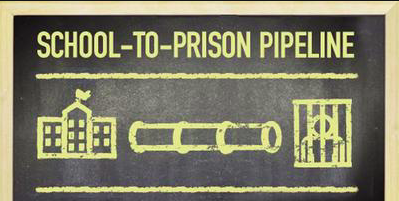The School-to-Prison Pipeline: How Do We End It?
The School-to-Prison Pipeline— an obstacle that stands in between minority students and their education. It is without a doubt that minority students are subject to bias when it comes to disparities in discipline in the classroom. Sarah Sparks, a writer for EdWeek and educational researcher, writes about these biases and their consequences in her article “Students Move Further Down School-to-Prison Pipeline With Every School Suspension.” In her article, she writes on a study that concluded that “a student’s risk of criminal behavior worsened with each subsequent suspension” (Sparks, 2019). So, with these results comes the question: How do educators help to end the trend?
While teachers and educators alike across the country have identified suspensions and expulsions as a key factor in the School-to-Prison Pipeline and an obstacle in the way to their student’s success, identification is just half the battle. Unfortunately, this problem cannot be solved solely from within. Lillian Lowery, former superintendent of Maryland State Schools, and Evan Stone, former sixth grade teacher in the Bronx and CEO of Educators of Excellence, have identified the issues in their article in the Education Post. In recent years, educators alone, without specific legislation, have “reduced out of school suspensions by 20 percent” by implementing alternative and restorative approaches to punishment (Lowery and Stone, 2017). Lowery and Stone speak for many eager practitioners who are committed to making a change, but need help. In order to dismantle the existing systems, the educators “need access to training on implicit bias, school and classroom climate, social-emotional learning, culturally relevant and responsive pedagogy, trauma-informed practices and restorative discipline techniques” (Lowery and Stone, 2017). While change from within is important and necessary, the backing from the federal government is even more vital. Moreover, the solution is two-fold: educators change their behavior and the government funds resources to teach them how to do so.
